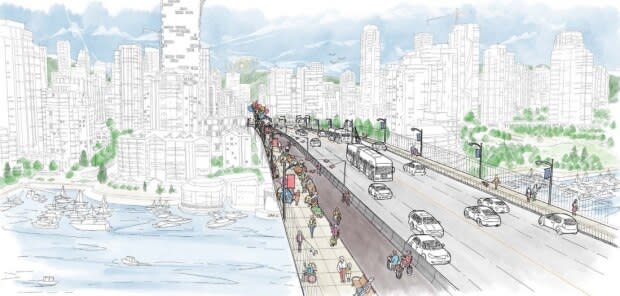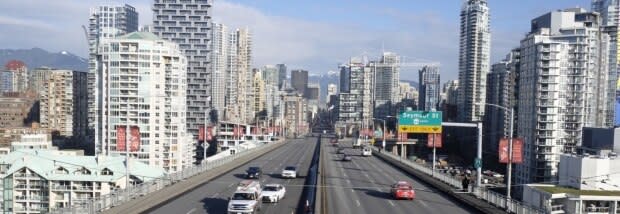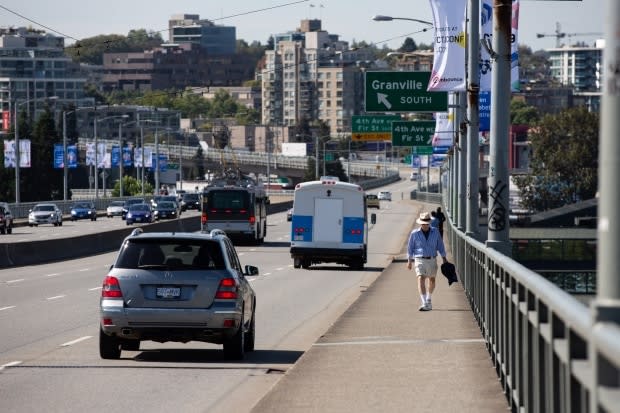Here's what the proposed Granville bridge redesign looks like
The City of Vancouver revealed its proposed plan for a redesign of the Granville Street Bridge Monday.
The redesign is meant to improve access and accessibility on the bridge for pedestrians and cyclists in one of the most important connectors in the city, linking the city's downtown core to the south Granville and central Broadway areas.
"This bridge is really important to be connecting those two areas of high population and jobs," said Paul Storer, the manager of transportation design at the City of Vancouver.
The design was chosen after public consultations and discussions among a diverse set of stakeholders, Storer said.
Here's what the proposed redesign looks like
1) The number of vehicle lanes will shrink from eight to six.
The Granville Bridge, which was designed for a high-volume downtown freeway which was never built, currently has eight lanes.
"The Granville Bridge right now has way more motor vehicle capacity than it needs," Storer said.

He says the number of motor vehicles that use the bridge could more or less fit into four travel lanes out of the eight, but this design will still leave six lanes for travel.
The space from the two removed lanes will be reallocated to wider sidewalks and bike lanes.
2) Both sides of the bridge will have newly accessible sidewalks with protective barriers between motor traffic.
Storer said most people submitted feedback saying they want both sides of the bridge to be accessible and comfortable to walk on.

The west side sidewalk will be wider with more bench seating and mini-plazas at key locations along the bridge. The west side was chosen, Storer said, because people preferred the west-side views of the Burrard Bridge and English Bay.
Each sidewalk will have barriers protecting them from motor traffic.
3) A two-way protected bike lane will be built on the west side of the bridge.
The west side of the bridge will have a two-way protected bike lane.
Storer said the design team had considered splitting up the lanes in favour of one-way bike lanes on either side but that would have been a less efficient use of space.
The bike lane would be relatively flat and connect with the 10th Avenue bike route.

4) There will be traffic signals at four off-ramps to help people and cyclists cross safely.
As part of the design upgrade, there will be traffic signals at the Howe Street, Fir Street, Hemlock Street, and Seymour Street ramps to help pedestrians cross safely.

"The nice thing about these signals is that because they're only stopping one direction of traffic they can be really tightly co-ordinated with the traffic signals on either end, so that it doesn't really introduce any new delay to people driving across the bridge," Storer said.
More approvals to come
The design still has to go through more refinement. There will be public open house events surrounding the design as well as a survey. Vancouver council will discuss the proposed bridge redesign and public feedback between March and April this year.
There's also the question of cost.
Council has approved $25 million for the redesign, but this proposed model is projected to cost $30 to $40 million. Storer says the first phase of the project could be covered by the $25 million, to be completed within the year 2021.
The additional projects and funding for the bridge will be subject to council's approval of the city's capital plan for 2023 to 2026.


